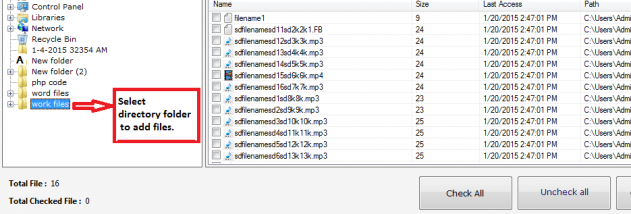
- #BATCH FILE RENAME UTILITY CNET PDF#
- #BATCH FILE RENAME UTILITY CNET INSTALL#
- #BATCH FILE RENAME UTILITY CNET FULL#
Worried that something might become messed up in the renaming process? That's what the preview tab is for. Go to the next tab, "Choose execution parameters" to select the location where the files should be saved (source or a different folder), decide whether Rename Us should overwrite the files? Save the process record in a log file in TEXT or HTML format. You can save your session as a Rename US project, and come back to it anytime. The rules for file extensions are exactly the same, but you can define them separately in the bottom pane. When you add a rule for file name, it is displayed in the top pane along with the parameters you selected and a preview of the file name. A few of these renaming rules have a built-in preview option that displays what the new file name would look like. The enumeration option allows you to replace the file name with a schema, or use it as prefix or suffix, and optionally select schema separators. It has options to use enumeration, change text to upper case or lower case, replace a substring with new text, add prefix or suffix, cut a prefix or suffix, custom expression, change Cyrillic symbols to translit. Click the drop down menu under the "Rules for file names". The program can be set to copy the files or move and rename them.

The next step is to configure the renaming rules, head to the second tab, "Specify renaming actions". You may use the context menu for copying the file names or to export the data. The export options in Rename Us allow you to directly save the data in a TXT, CSV, XLSX, HTML, XML, or SYLK file.
#BATCH FILE RENAME UTILITY CNET FULL#
The copy button copies all file names, with their full path, modified date, file type, size and creation date.

The toolbar above the queue can be used reorder the items which can be useful if you're using an incremental renaming method, or you can randomize the list. The files that you add are displayed in the large pane at the bottom. Or, click the double-arrow icon to add all files and folders to the queue. Select multiple files using the Shift key, and click on the icon with a single arrow to add them to the rename queue. Mouse over the dots below the pane and the cursor changes to a drag pointer, use it to resize the view to display more files. Note: The default view mode of Rename Us is pretty small, you can only see three files in the right pane. You may enable the option to include subdirectories and make read-only files display too. When you have made your selection, the pane on the right will display the files in the chosen directory. The top left pane is the tree pane which you can use to select the folder where your files are stored. There are three panes in the select files tab. Rename Us' interface is divided into several tabs. Double click on the new batch file you just created and see what happens.Recently, I came across a similar program called Rename Us. Open up in Explorer the folder: C:Program Files (x86)PDF LabsPDFtk Serverbin and copy the libiconv2.dll and pdftk.exe files.
#BATCH FILE RENAME UTILITY CNET PDF#
Copy the entire row of results and paste them into a blank text file and save it in the directory that contains all your PDF files.14. Copy this formula down Column B until the last row of PDF file names.13. In cell B1 paste in this formula: ="pdftk """&A1&""" input_pw foobar output ""decrypted_"&A1&""""(where foopass is your 18 character password).12. Make sure the PDF file name start in the first row.11. Make sure your PDF files name are in column A and no other data in in other columns. Click Finish and then clean up the data by removing all the columns and rows that contain your PDF file names.10. Move the right most arrow to the 39th character or just before all the file names.9. Use the "Fixed Width" method of separating the columns.8.

Use the Excel suggested text to column prompt or select the column with all the text and select "Text to Columns" from the Data menu of Excel.7. Paste the text file into a blank Excel worksheet starting in cell A1. Open the created text file and select it all and copy.5. Enter in the command: Dir > mypdf.txt (you can change the name of the text file with any name).4. CD (change directory) to the directory with your PDF files.3.
#BATCH FILE RENAME UTILITY CNET INSTALL#
If you tell it to use a dictionary attack in the settings, then include only your password in said dictionary maybe it will work.PDFTk,, is a command line app you can install with which you can make a batch script to decrypt the PDFs as follows:1. I'm not sure how good it is, but Free-PDF-Unlocker is freeware.


 0 kommentar(er)
0 kommentar(er)
